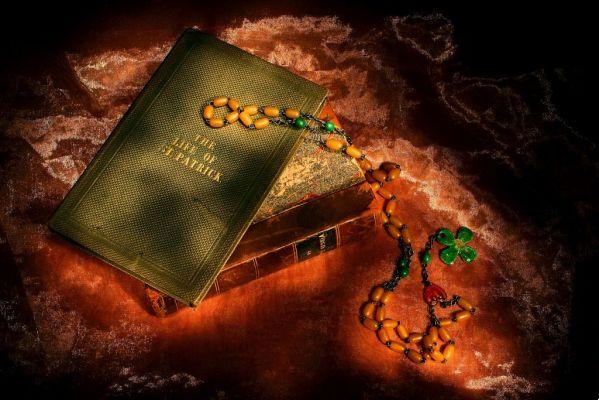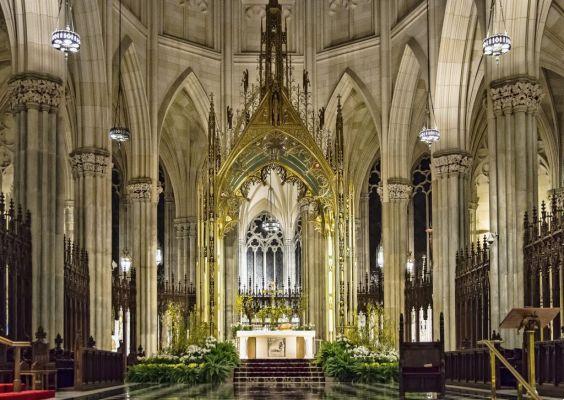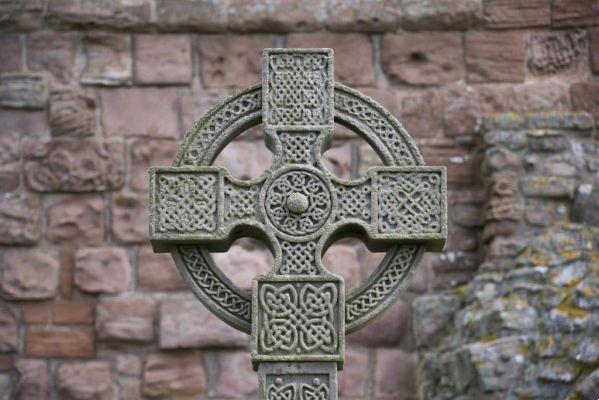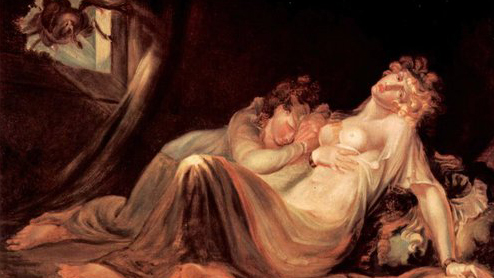There are many saints in the Catholic Church who were once men and women with wonderful stories of devotion, resilience and dignity. They were great influencers in their societies and their times.
Knowing the trajectory of each one and acquiring knowledge about how faith is important for humanity and how it transforms realities is enriching. Saint Patrick is one of the most iconic of Catholicism. Read on and learn about the revolutionary story he built.
The beginning
Saint Patrick was born in Great Britain, the domain of Rome, between the years 373 and 390, at the end of the XNUMXth century, in an uncertain place – perhaps in Scotland or Wales.
Son of Calpurnius, an officer in the Roman-British army and deacon (when they were still able to marry), Saint Patrick was born Maewyn Succat.
When St. Patrick was 16, he was kidnapped by Irish pirates and headed to Ireland to live as a slave. He worked as a sheep herder and swineherd in County Antrim, Northern Ireland.
In Great Britain, Saint Patrick was not very religious, however, while he was a slave, in a hostile environment, among rude and pagan people, he nourished his faith, believing that the period of change in life signaled the encounter with God. He had a vision when he was praying, in which he found a boat that was leaving for his homeland. So, after six years in captivity, he fled, returning to his family.
evolving in faith
In order to improve his Catholic faith, Saint Patrick went to a monastery in Auxerre, in Gaul (present-day France), where he studied for 12 years under the guidance of Bishop Germanus and followed in the religious life, with discipline and prayer, becoming a priest and missionary.
Back in Great Britain, he served a great apostolic mission. However, he had the desire to evangelize Ireland, talking about the existence of God, according to the Catholic faith.
In the year 432, Saint Patrick was summoned by Pope Celestine I to continue the mission of evangelization in Ireland, which was under the responsibility of the late Bishop Palladius. He traveled to the Island already bishop. At a stop on the journey, he would have received from Jesus Christ the staff that he himself used in the fields of Palestine. He landed in County Down.
St Patrick transforms Ireland's faith
For almost three decades, Saint Patrick converted practically all of Ireland to Catholicism, with peace and without using violence against those who preferred to remain in paganism. His motto was: “Respect to be respected”.
Saint Patrick evangelized, transformed the destiny of a people and immortalized in the history of Ireland the mission to which he was called, contributing to the expansion of the influence of the Catholic Church and making the country one of the most Christian in the world, lasting until today, with a population of 84,2% Roman Catholics.
Patrick's respectful attitude contributed to the fact that there were no reprisals against Christians in Ireland, and King Leogarius also converted to Christianity along with his entire court.

Saint Patrick was a visionary and founded several monasteries throughout Ireland, which spread the faith and culture and from where a large contingent of evangelizers and missionary monks became important examples of the expansion of Catholicism in foreign territories.
In Celtic society, the druids were responsible for advising, teaching and guiding others legally and philosophically. St. Patrick approached them and, little by little, included elements of the Christian faith in the culture of the region.
Although there is no proof, one of the methods adopted by Saint Patrick was to use the three-leaf clover, an element that represented the body, mind and soul in the Celtic religion, to explain the Holy Trinity (Father, Son and the Holy Spirit). The shamrock is one of the most important symbols of Ireland, known worldwide.

The Many Powers of Saint Patrick
Many legends surround the name of Saint Patrick, giving him mystery and magic. Below, we highlight the most emblematic ones.
Expulsion of snakes from Ireland
Saint Patrick would have banished snakes from Ireland, when, from the top of a cliff, after fasting for 40 days, he chased them to the sea. However, National Geographic did a survey in 2014 and identified that there are no fossils of the reptile in the country, concluding that, probably for millennia, it did not exist there. The snakes, in fact, are a metaphor of the Catholic Church for the elimination of the pagan rites that existed in the country at that time.
Metamorphosis for deer
Patrick was credited with the ability to transform himself, along with his companions, through a power known as “féth fiada” (master of the mists, created to make himself invisible to enemies), into deer, to escape persecution and follow to the Hill of Tara, ancient capital of Ireland, which, to the Druids, was the sacred abode of the gods.
King Leogarius wanted to prevent Saint Patrick from spreading the Catholic faith in the capital and sent soldiers to stop him. Then Saint Patrick sang the hymn “O Grito do Gamo” or “A Couraça de São Patrício”, of his own authorship and mixed himself, with the others, to deer and deer, confusing his pursuers.
Croagh Patrick's Blackbirds
While St. Patrick spent Lent on the mountain of now known Croagh Patrick, County Mayo, he was pursued by demons disguised as black birds – the blackbirds – which together formed a dense cloud that darkened the sky. He prayed and rang a bell to demonstrate his faith, when an angel appeared and revealed to him that all his requests to God regarding the Irish would be granted and they would remain in the Christian faith until the Day of Judgment.

to celtic cross
Originally the Celtic cross, called the Solar Cross, represented the elements Sun and Moon, symbols of pagan religions. With the aim of introducing the Catholic faith, Saint Patrick added the cross to the symbol, keeping the circular shape and interconnecting the crucifix. He showed his willingness to add pagan practices and symbols to Christian beliefs, facilitating the transition from paganism to Christianity. There are two versions of the cross – the patée (1461) and the sautor (red), the latter being the emblem of the Order of Saint Patrick, founded in Ireland in 1783.
the incessant fire
To originally celebrate the summer solstice and the triumph of light over the powers of darkness, the Celts held a great feast, called Beltane. The King of Ireland would light a bonfire atop the Hill of Tara, which would light every other memorial bonfire in the country. However, anticipating King Leogarius, Saint Patrick lit it and attracted the attention of the druids, who were unable to extinguish the fire, attributing magical powers to it. Also the king could not put out the fire and understood that the saint was more powerful than him, endorsing the Catholic missions across the country.
On March 17, 461 (uncertainty), in County Down, St. Patrick died, leaving the organized Catholic Church in Ireland. Currently the place is called Downpatrick (City of Patrick). For several centuries, this date in Ireland has been a national holiday: Saint Patrick's Day, patron saint of the country, where there are more than 200 shrines built in his honor.
St. Patrick's Day coincides with the spring solstice, a period of renewal. In the celebrations, which also take place in other places in the world where there are Irish people and their descendants (the United States, Canada and Australia, mainly), people dress in green, go to mass, decorate the places with shamrocks, dance to a lot of music. , drink and have a real party. The Saint Patrick's Parade, for example, began in the United States. Today, outside of Ireland, it represents an opportunity to show pride in being Irish.
In España, pubs usually organize a commemorative program for the entire month of March, in honor of the saint.
Why the color green as a symbol?
In 1798, there was a rebellion by Irish soldiers. To propagate their political ideals, they decided to dress in green uniforms on March 17, in order to attract public attention, alluding to the shamrock, one of the symbols of the St. Patrick's Day celebration. From that event, everyone was dressed in a green piece of clothing or wearing a shamrock.

Saint Patrick was a great influencer in his time. He wrote an autobiographical book, known as “Confessio”. He encouraged the sacrament of confession in a private way – as we know it today –, which was previously public.
You may also like
- Discover the Celtic people and their magical and charismatic culture
- Understand seven differences between religion and spirituality
- Reflect and discover who He is, the Supreme Being of the Universe
Coming from a family of important people in the Catholic Church, São Patrício left as a legacy a transforming story of faith and overcoming adversity. He is an example of devotion and especially focus on goals. He used intelligence, tolerance, and gregarious vision to achieve an enormous religious feat. Be inspired by the respect he exudes to this day and remember March 17 to honor him. Do as he does and always show your respect and understanding of differences.

























